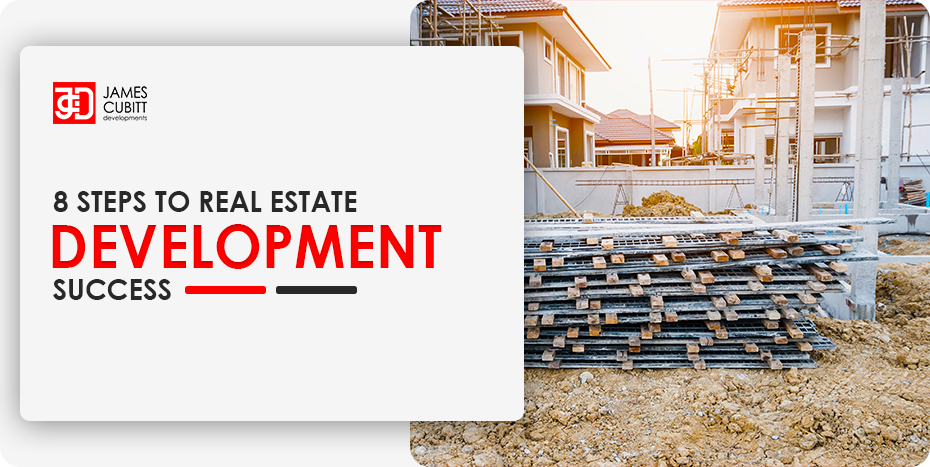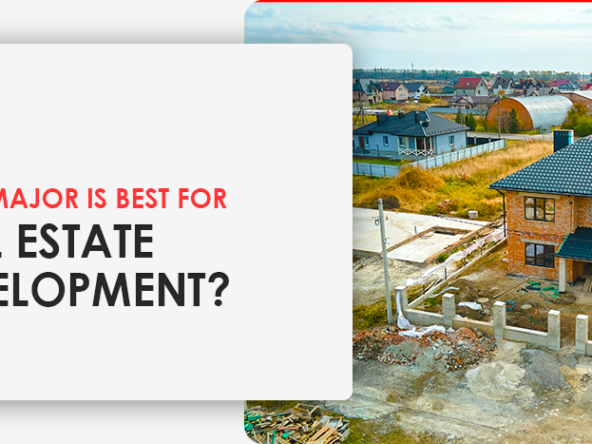Do you want to ensure the profitability and success of your property development projects? These are the steps to real estate development success you should follow.
The Steps to Real Estate Development Success
- Define your goals and objectives
The first step before starting any property development is to define your goals and objectives. It is the ideal way to lay the foundation of real estate development success for yourself because developing a property is no small feat.
To define your goal, you need to start by asking this one question:
What do you hope to gain from the project?
The answer to this will help you define a realistic goal for your development project. Once you have a realistic goal to run with, you will have a plan and a perspective to approach your property development project.
- Defining the ownership structure
Determining the ownership structure of your property development is the next step in ensuring a successful real estate development. There are several ownership structures to choose from. Will you own the development property alone or do you need contributions from real estate investors in the form of cash or equity?
Each ownership structure has its own set of features, benefits, and drawbacks, so it is critical to understand the pros and cons of each before making a decision. To understand the pros and cons of each option before making a decision, you must consult with an accountant and a lawyer who specialises in property development. Evaluate your circumstances and decide if the properties will be retained or sold upon completion of construction. Only then will you be able to choose the best ownership structure for you.
- Consider your financial situation.
Once you have decided on an ownership structure ideal for you, the next step is to decide on the size of the development you are looking to build. Your decision on the size will help you know if it is something you have the financial capability to undertake on your own as a real estate developer or if you need to source for finance like a credit facility. You also need to be able to ascertain how much capital you can afford to invest in the development project.
If you do decide to get a loan, you must know what your borrowing capacity is and the right place to get it. Most lenders assess potential borrowers’ creditworthiness and associated risk using a system known as the “5 Cs of Credit”—Character, Capacity, Capital, Collateral, and Conditions. It is necessary to check these requirements before you proceed to apply. This is also where you need the expertise of a mortgage broker.
- Do a Feasibility Analysis
A feasibility study is necessary after settling on the size and type of property to build. A feasibility study will help you discover if your property development project will be viable and profitable. It can also help you locate the best land with significant growth potential or one with the infrastructure to support capital growth, such as proximity to schools, hospitals, employment, transportation, infrastructure, shops, restaurants, community hubs, or areas where significant investment is taking place.
As a part of the feasibility study, it is also useful to conduct comprehensive market research that will help you investigate recent sales prices for similar dwellings you have in mind. This will help you calculate the expected return on investment for the real estate development project and give you an overview of what to expect as the total costs.
- Purchase the Land for development.
Once your feasibility analysis is completed, you can purchase a suitable development site with significant growth potential or one with the necessary infrastructure to support capital growth. But first, conduct the necessary due diligence to ensure that there are no obstacles that could derail your project or prevent the development from being approved.
At this point, it is necessary to have a land inspector or a property lawyer inspect the property to alert you to any potential risks before purchasing. You can also have your builder assess the property to advise you of any potential issues that may increase the cost or hinder construction.
- Create a design and apply for town planning and permits.
Designing your property development project and applying for town planning and permits should come next after purchasing your land. You can engage a custom builder or architect to help with the design of your development project. However, whichever you choose, they should be able to provide you with a budget-friendly design no matter how creative it may be. This is because over-capitalizing will be unfavourable to the overall real estate development process.
Once you have a design, it’s time to prepare other construction documents to apply for the necessary permits to commence construction.
- Begin building
With the necessary permission, you can then begin construction. This is where you put into gear all the written plans and preparations so you can have a standing development. Your design is already drawn and laid out to give you a picture of what your development would look like. But you need a builder to bring it to life. So, this is the time to sign a contract with a reputable builder that will help you with the construction process.
Information in the signed contract would most definitely include how long the construction would last and every other essential piece of information. Usually, the construction process depends on the size of the development.
A note of warning, though—some builders deliberately under-quote projects with ambiguous contract inclusions to win the job. After that, they submit costly variations along the way to boost their margins, thereby making you pay more than what you budgeted for and putting your project at risk. So, it is important to select your builder carefully. Also, know that hiring the “cheapest builder” to save some money may not be the right decision because this can lead to poor quality construction, defects, rework, delays, and project cost overruns. Go for quality workmanship. Alternatively, you can also engage a real estate development company instead.
Another thing you need to pay close attention to is the inclusions and exclusions in the contract of work you will be signing. It is necessary to carefully read through it to avoid unpleasant surprises that will erode the profitability of your project.
- Finish the Development Process
After construction is finished, you need to decide what you need to do with the property. Are you selling it or leasing it out? Your decision depends on several factors: your pre-defined goals and objectives, the ownership structure, and the various agreements that are tied to the property development project.
Once you have gotten your expected return from the development project, you can reinvest in your next development project and continue to achieve your financial goals and objectives with the profit or equity generated from the previous property development project.
CONCLUSION
At James Cubitt Developments (JCD), we develop buildings that are more than a structure but an expression of personalities. We are a leading real estate development company that you can trust to help you improve your pieces of real estate to increase their value and meet your space needs.
Whether you are looking to build new structures or modify your existing ones, we bring our experience and expertise to work to help you create a satisfactory project. Let’s help you convert your building ideas to real property. For more information:
Phone number: +234 1 715 9995, +234 1 715 9996
Email: info@jamescubittdevelopments.com




